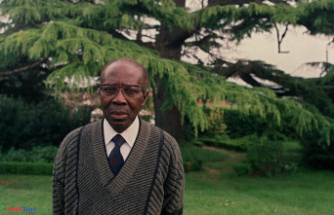It is not very difficult to assume that forensic psychologists in contemporary Germany would recommend a lighter sentence for David Richard Berkowitz than he received. Because his biography showed many hardships: He was the son of a mother from a poor background who became pregnant unintentionally and put the child up for adoption a few days after the birth under pressure from her lover, a married man. He then grew up as the only child of a middle-aged adoptive family. The adoptive mother died when he was in puberty; the second wife of his adoptive father did not get along with him at all.
In a report on Berkowitz that would be presented to a German court today, these events could be seen as a reason why he went down the wrong path - with the foreseeable result that he might not even get a regular prison sentence, and certainly not six times 25 years.
Things were handled differently in the USA: Berkowitz has now been behind bars for 45 years and theoretically still has 105 years ahead of him; his most recent parole hearing was in 2018 and had a negative outcome. Because there they have far less understanding for criminals than in this country, no matter how difficult their childhood was. Especially when it comes to a serial killer who has killed (at least) six people and injured seven others.
The excess of violence began on July 29, 1976. Around 1:10 a.m. on Thursday, 18-year-old paramedic Donna Lauria and nurse Jody Valenti, a year older than her, were in their car in the Pelham Bay neighborhood of the Bronx, New York. Suddenly a man came to the car door, pulled out a gun and fired. Donna was killed instantly; Jody received a hit in her thigh, a third bullet missed both of them. The shooter turned and quickly walked away.
The surviving nurse testified that she hardly saw the killer and therefore did not recognize it. He is white, in his thirties, of medium height and full build. She described his hair as short and dark - too imprecise for an effective manhunt.
The next attack followed three months later, on October 23, 1976, this time in the Queens district, a good ten kilometers to the south. A young couple was shot at through the car door; the 29-year-old man wore his hair long so it could be mistaken for a woman. He had to have a metal plate put in his head. His girlfriend suffered no permanent damage.
Unlike Joanne Lomino, who was walking home from a movie theater with her friend Donna DiMasi shortly after midnight on November 27, 1976. When both of them were already on the terrace of their parents' house in Long Island, a young man in uniform spoke to them from the street and asked them the way. Then he pulled out a revolver and fired. Donna was only slightly injured, but Joanne was left paraplegic from a hit in the back.
On January 30, 1977, shortly after half past midnight, the next attack followed in Queens: It was aimed at 26-year-old Christine Freund, who was traveling with her fiancé, John Diel. The woman was killed, Diel survived with minor injuries. Again, .44 Special revolver caliber bullets were secured, as in the other attacks before; however, all but one of the bullets were so deformed that they could not be assigned to a weapon with certainty.
Now, for the first time, the New York City Police Department has publicly announced that the attacks may be connected. All of the victims were young women with long dark hair. The perpetrator was nicknamed the ".44 Killer". The crime pattern was also similar: the attacks always took place in rather quiet residential areas. The New York Police Department (NYPD) was certain they were dealing with a severely mentally disturbed serial killer.
On March 8, 1977, at around 7:30 p.m., the next murder followed in Queens: 19-year-old student Virginia Voskerichian was still holding her books in front of her head, but the bullet pierced the paper and killed her immediately. After all: A bullet could be demonstrably linked to the murder of Donna Lauria.
Two more deaths occurred on April 17, 1977, just a few blocks from the July 29, 1976 crime scene. Alexander Esau and Valentina Suriani were in his car; he had curly hair of medium length and she had a short hairstyle. Both died from headshots; the bullets came from the same gun that had killed Lauria and Voskerichian.
Nearby, police found a letter of confession, handwritten in scrawled capital letters. The perpetrator called himself "Son of Sam" and described himself as a "monster," but declined to be called a "misogynist," as an NYPD detective did at a news conference. "Shoot me first - shoot to kill," the perpetrator demanded of the bewildered police officers. “Dad Sam is old now. He needs some blood to preserve his youth.”
It became clear on June 26, 1977 in Queens that the sender was serious. Three bullets hit Sal Lupo's car, in which the 20-year-old was sitting with his girlfriend Judy Placido. Both were slightly injured.
The NYPD dreaded July 29, 1977, the anniversary of the first shooting—but nothing happened that Friday. But two days later: The secretary Stacy Moskowitz and the salesman Robert Violante, both 20 years old, were sitting in Violante's car after their first date, which was parked under a street lamp in a park in south Brooklyn. Suddenly, a passer-by fired four shots through the car window, hitting both of them who were kissing on the heads. Violante lost an eye, Moskowitz died.
The perpetrator David Berkowitz was finally arrested by chance: On August 9, 1977, a witness noticed a man who was apparently holding a gun. A patrol officer was writing down the license plate number of an illegally parked car from which the man had apparently come. The woman informed the police, who checked all the cars registered that evening. One of them belonged to Berkowitz. A neighbor said she knew the man who shot her dog, who went by the name "Sam."
Police searched the car and found a gun, maps showing the scene of the murders, and .44 Special ammunition. Two officers caught Berkowitz as he came out of his apartment. Now the murder weapon was also secured, and the arrested man confessed: "Well, you got me." He smiled at the same time.
In his confession a few hours later, Berkowitz admitted to the murders and explained that his demon, the dog "Harvey" of his former neighbor Sam Carr, had ordered them: The animal had demanded the blood of pretty young women from him during satanic rituals. Berkowitz was nevertheless declared sane and stood trial in the early summer of 1978. He called one of his victims a "whore" and yelled, "I would kill her again. I would kill them all again.” The judge ordered a new psychiatric evaluation, with the same result: Berkowitz was guilty.
He was sentenced to 25 years in prison six times, which was the maximum sentence permissible at the time for each of his murders. In prison, a fellow inmate attempted to murder Berkowitz in 1979. Eight years later, the serial killer turned to the evangelical faith. Instead of being called "Son of Sam" he now wanted to be called "Son of Hop".
Since 2002, David Berkowitz has had the right to have a parole review every two years. By 2018, all of his applications were denied. The appointment in 2020 was canceled due to fears of Corona, and it is unlikely that David Berkowitz will be released in 2022. So the "Son of Sam" should probably be released after 47 years in prison at the earliest.
You can also find "World History" on Facebook. We are happy about a like.












